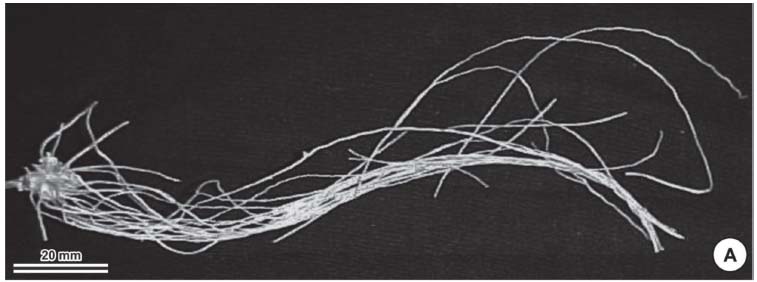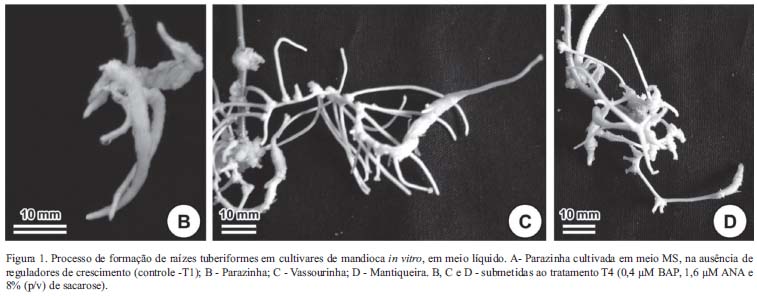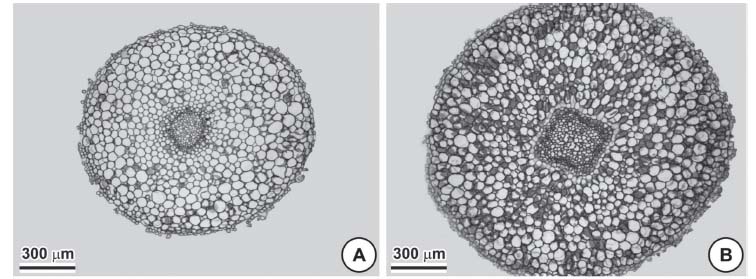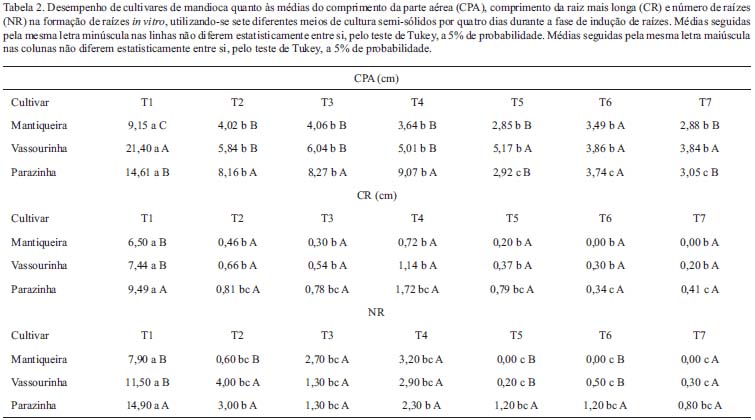The goal of this work was to induce in vitro tuberization of cassava cultivars (Manihot esculenta Crantz.) in two kinds of media, under the influence of different growth regulators and sucrose concentrations, as well as to determine subsequent structural alterations due to the tuberization. The influence of the kind of media, action of BAP and NAA and doses of sucrose (3%, 6% and 8% w/v) were analyzed by measuring the length of the aerial portion, number of roots, morphological pattern of the tuber roots, as well as anatomical changes. There were differences among the cultivars regarding the response to in vitro tuberization. Cultivar Parazinha had better induction of tuber roots, where treatment was with 0.4 µM BAP, 1.6 µM NAA and 8% sucrose as inducing medium, whether in solid or liquid medium. Cultivar Mantiqueira had the tallest aerial portion, longest root and largest number of roots, but the induction of tuber roots was recalcitrant. Anatomically, the microtuberization in vitro was characterized by the presence of starch grains.
Manihot esculenta Crantz; in vitro culture; growth regulator; tuberization









